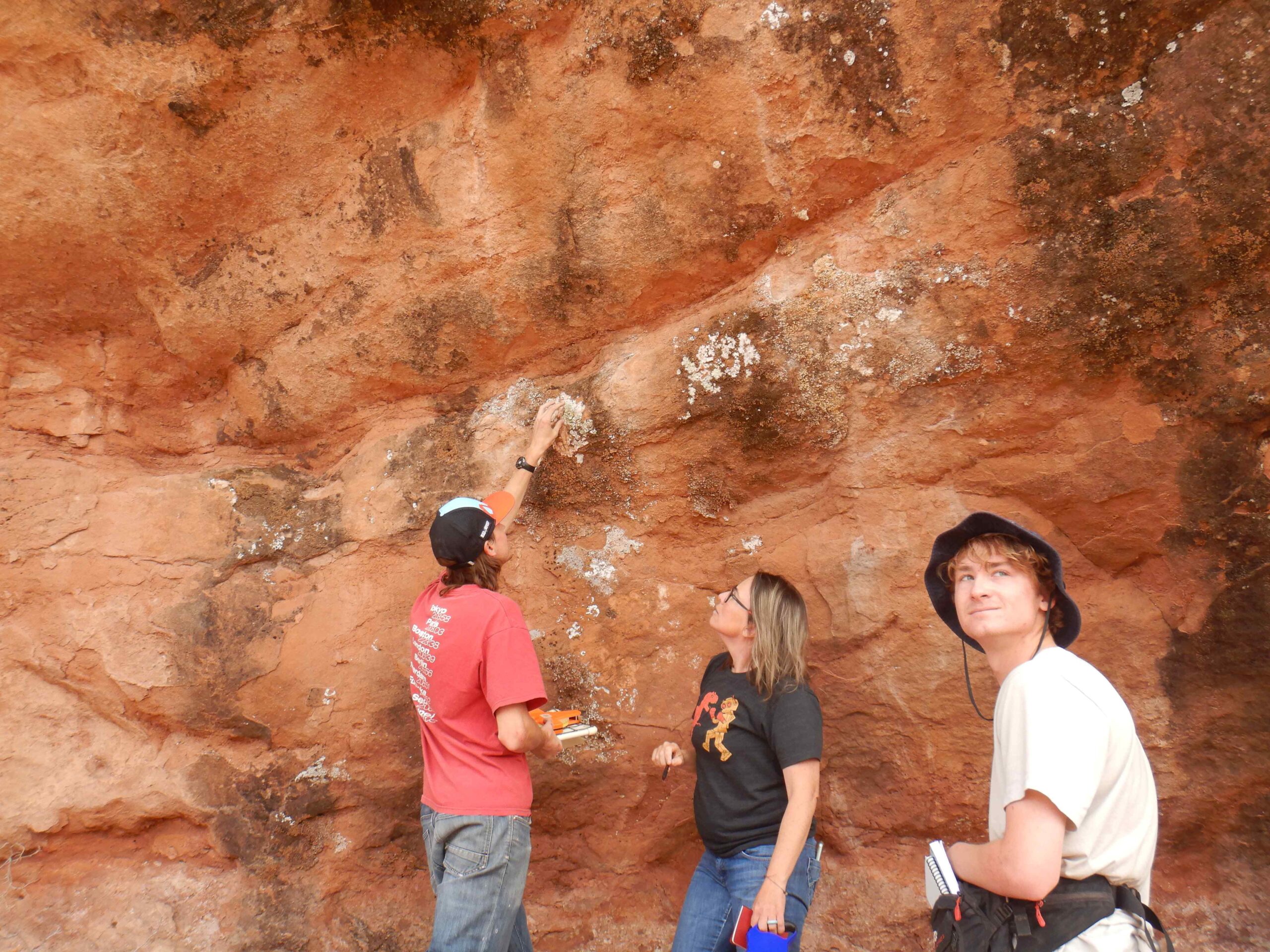Some information may be outdated.
In high school, Brendan Moore studied lichen with local scientists, now he’s studying meteorology at a university
Heather Bergeson
Moab Sun News
As a high school student, Brendan Moore was one of the first participants in Science Moab’s School to Science program. Now as a student studying meteorology at the University of Utah, Moore is continuing his study of the climate and ecology of the southwestern states.
Science Moab’s School to Science program pairs Grand County High School students with local scientists. Students get hands-on experiences in the field and the lab as they participate in single-day job shadows, longer internships or field trips.
In his final years of school, Moore decided to complete an internship after going out on a few job-shadowing trips. As an intern, he got to decide on his research topic and question and collaborated with his mentor, Robin Reibold, along with Dr. Sasha Reed and Dr. Erica Geiger, to develop an experimental method.
“I feel like [my internship] really showed me what research is,” Moore said. “The good, the bad, the tediousness, the pain of not seeing results after so much work, the excitement of seeing something cool. It really had me excited to go to college.”



Moore’s experience with School to Science gave him a leg up when he embarked on an undergraduate research project that he recently completed through the Wilkes Scholars Program.
Similarly to the School to Science internship, the Wilkes Scholars Program allowed Moore to follow his curiosity and decide on a research topic that most interested him. He looked to home for inspiration.
“Growing up in Moab, of course, that’s where a lot of my interest in Earth Science and understanding of how nature works stems from,” he said. “You know, being in that desert I was super-fascinated by everything going on — rocks, wildlife, vegetation and the weather, especially.”
While Moab is known for scorching temperatures in the summer, the town also experiences infamous desert monsoons that can have dire effects on the community. Moore used climate modeling software to try to discover what the weather patterns in the southeast part of the state looked like 8,000 years ago during the mid-Holocene Era.
He discovered that changes in the tilt of the Earth’s axis and shifts in pressure might have resulted in stronger monsoons during that period.
“There was a lot more topsoil from the Ice Age [at that point],” Moore explained, “and so there could have been a lot more grasses and pine trees, but the stronger monsoons actually washed off that topsoil and exposed a lot of the sandstone that we see around Moab and Canyon Country today.”
Moore’s research gives valuable insight into both the past and the future of Earth’s climate. He explained, “I think there’s a lot of valuable things that we can take away from looking back in time at a certain region to see how it responds to changes in the climate, whether it’s changes in the Earth’s orbit or human intervention with climate change and greenhouse gasses creating a warming effect. . . . And when we see hotter temperatures we can expect these monsoons to really become more frequent, or possibly even more intense, like we’re seeing now.”
At the end of the program, Moore presented his research method and findings at the Wilkes Climate Summit. Looking back at the experience he said, “I feel like I wouldn’t have the confidence to jump into a research project like I did if I hadn’t done the [School to Science] internship in high school.”
Moore plans to continue researching meteorology and climate in American Southwest at the University of Utah.
Appreciate the coverage? Help keep local news alive.
Chip in to support the Moab Sun News.





